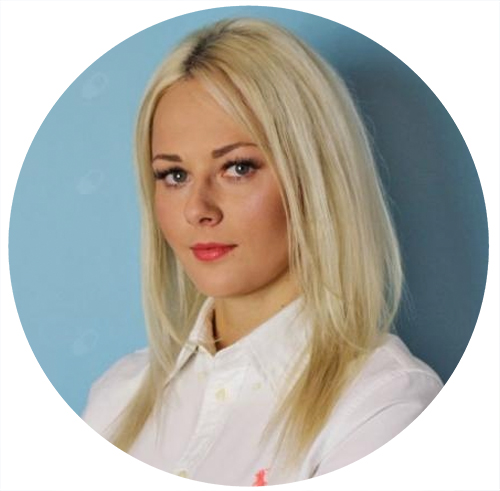Craniosacral therapy – migraine treatment, tension pain
Indications for the procedure
-
MENTAL ILLNESSES INCLUDING AUTISM, PSYCHOSIS, DEPRESSION, TRAUMAS FROM THE PAST, NEUROSIS, PERSONALITY DISORDERS
-
ENDOCRINE DISORDERS
-
DIGESTIVE SYSTEM DISORDERS E.G. FLATULENCE, ABDOMINAL PAIN, CONSTIPATION, IRRITABLE BOWEL SYNDROME
-
BREATHING DIFFICULTIES
-
AILMENTS OF UNKNOWN ORIGIN
-
NEUROLOGICAL PROBLEMS SUCH AS HEADACHES, MIGRAINES, FAINTING, BRAIN INJURIES, SPINAL CORD INJURIES, MULTIPLE SCLEROSIS, PARKINSON'S DISEASE
-
MUSCULO-SKELETAL DISORDERS – BACK PAIN, SCIATICA, SCOLIOSIS, PERIPHERAL JOINT PAIN, BACK PAIN, INCREASE MUSCLE TENSION
Contraindications
-
ACTIVE STROKE
-
CARDIAL INFARCTION
-
HEAMORRHAGE
-
HIGH PRESSURE
-
GLAUCOMA
-
BLOOD CLOTS
-
VARICOSE VEINS
-
ENDANGERED PREGNANCY
-
PREGNANCY IN VITRO OR DURING THE FIRST TRIMESTER
Craniosacral therapy is an innovative, practical procedure that is both gentle and non-invasive. This therapy is suitable for everyone – from inflants to the elderly. Under the influence of injuries, traumatic experiences or stress, disturbances in the work of the cranial system may occur in the body. Due to this, blockages arise that cause muscle tension that leads to various ailments.
Craniosacral therapy, which is a type of manual therapy, is based on physiology and anatomy. It is worth bearing in mind that there are three physiological rhythms in the human body which include heartbeat, breathing, rhythm of cerebrospinal fluid ripple. Craniosacral therapy is used to normalize the flow of this fluid.
What is craniosacral therapy?
During diagnostics, the therapist places his hands properly on the skull and sacrum to assess the rhythm and flow of cerebrospinal fluid. Additionally, he evaluates soft tissue tension. If the therapist senses any abnormalities, he applies non-invasive manipulations through pressure, traction, pressure or decompression.
Appropriate manual techniques seek to restore the physiological movement of the skull bones to relax the spinal cord and brain. What’s more, the fascia also relaxes, which line the internal organs and soft tissues. The techniques used during craniosacral therapy are very delicate. Their strength does not exceed 5 grams.
The therapy lasts about 60 minutes. The patient can be fully dressed. Most often they lie on the couch. The procedure is carried out in a quiet and peaceful atmosphere so that it is possible to relax. After the craniosacral therapy, the patient lies in a safe position for several minutes. They should then feel the reactions that are taking place inside their body. It is worth relaxing and supplying fluids after the procedure.
Craniosacral therapy – indications
Craniosacral therapy finds application in many fields of medicine. It affects the functions of the nervous, respiratory, digestive, lymphatic, musculoskeletal and endocrine systems. Indications include:
- mental illness including autism, psychosis, depression, traumas from the past, neurosis, personality disorders
- endocrine disorders
- digestive disorders e.g. flatulence, abdominal pain, constipation, irritable bowel syndrome
- breating difficulties
- ailments of uknown origin
- neurological problems such as headaches, migranes, fainting, brain injuries, spinal cord injuries, multiple sclerosis, Parkinson’s disease
- musculo-skeletal disorders including back pain, sciatica, scoliosis, peripheral joint pain, back pain, increased muscle tension
The therapy is also great for excessive stress, difficulties in concentrating, speech impediments, dyslexia, chronic fatigue, pressure problems, and sleep disorders.
Contraindications to craniosacral therapy
There are several contraindications that prevent the use of craniosacral therapy. They must be strictly observed by both the patient and the therapist.
Contraindications include: active stroke, heart attack, haemorrhage, high blood pressure, glaucoma, blood clots, varicose veins, pregnancy – at risk, in-vitro or during the first trimester.
Craniosacral therapy in children
Craniosacral therapy can be performed on patients of all ages – including children and newborns. It will be a perfect choice for children who have emotional or sensory integration disorders, are hyperactive, develop more slowly, have problems with speech or learning.
After the procedure, social and emotional skills are noted. Hyperactive children calm down, and toddlers who have motor coordination disorders become aware of their own body. What’s more, they also normalize their muscle tension.
Parents or guardians are recommended when treating children. Sessions for children last about 30 minutes.
The procedure is performed by
-
Katarzyna Maliszewska – physiotherapist
Master's degree in physiotherapy and manual therapist. A graduate of the Medical University of Lublin. Already during the MA studies she cooperated with the Association dealing in the therapy of children with extensive neurological dysfunctions and related developmental disorders.
Partners
Contact details
MEDICOR Clinic of Aesthetic Dermatology and Laser Therapy
6/5 Rakowicka Street, 31-511 Krakow
- Reception: +48 792 552 777 / +48 12 43 012 40
- E-mail: centrum@medicor.krakow.pl






